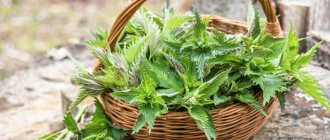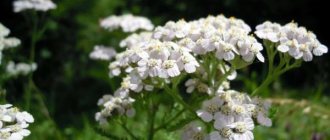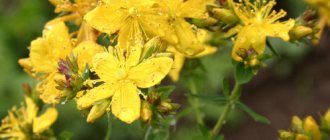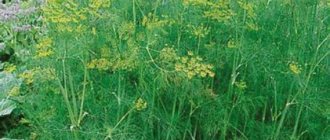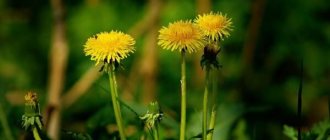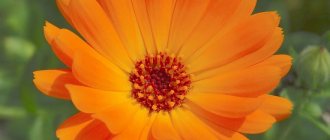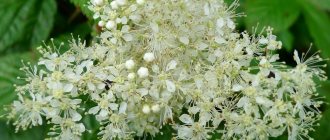When it comes to proper and healthy food, vegetables and fruits are usually the first to come to mind. And few people remember medicinal herbs and spices in this regard. And they, by the way, also play a vital role in health. Take sage, for example. This is not just a fragrant seasoning for meat or delicious tea. The benefits of this plant were known in ancient times, but today they are forgotten by many.
general characteristics
The Latin name for sage translates to “stay healthy.” And this is no coincidence. Since ancient times, this plant has been used by herbalists and traditional healers to treat a wide variety of ailments.
Content:
- general characteristics
- History of origin and use
- Chemical composition and nutritional characteristics
- Beneficial features
- Use in folk medicine
- Application in cosmetology
- Use in cooking
- How to select and store
This is a spicy herb from the mint family. Its closest relatives are oregano, lavender, rosemary, thyme, and basil. Sage is recognized by its gray-green leaves and, during its flowering period in August, by its purple-white or white-pink flowers. But unlike many herbs, this plant has a pronounced smell not only of flowers, but also of leaves. This plant has a specific aroma, vaguely reminiscent of mint, but with bitter notes.
The amazing beneficial properties of sage have made it one of the main medicinal herbs in European and Chinese herbal medicine. This plant is common in many regions, but the most famous traditional “location” is the countries around the Mediterranean Sea. By the way, there are more than 900 species of sage in the world, but not all of them are eaten.
Benefits of sage for men
Despite the fact that sage is considered a plant of “male power,” there has been no documented evidence of the tea’s effect on potency. On the other hand, sage is generally good for the body due to its large amount of antioxidants - tannins, tannins and vitamin C - and improves blood circulation (including the pelvic organs).
In folk medicine, it is believed that sage improves male attractiveness, increases testosterone levels and the quality of genetic material when consumed. Plant-based products are often recommended not only for women, but also for men who have difficulty procreating.
History of origin and use
Sage is native to Mediterranean countries and has been used in these regions for thousands of years. In addition, this herb has one of the longest history of use in medicine. The ancient Greeks and Romans highly valued the healing properties of sage. The Romans treated it as a sacred plant and even created a special ceremony around the collection of the herb. These cultures also used sage as a meat preservative. Ancient cooks believed that this herb slowed down the spoilage of food. And now this fact has received scientific confirmation. Researchers have found a large number of terpenes in sage, which, in fact, work as preservatives.
In addition, throughout history, sage has enjoyed the fame of a magical plant. Arab doctors in the 10th century considered it a plant of immortality; Europeans in the 14th century used the herb to protect against witchcraft. The Chinese also valued this plant. But in the east, sage was used primarily as a delicious tea.
Salvia officinalis - doctors' opinion
Medicine has recognized sage as an effective natural antiseptic that can protect against superinfection in various skin lesions, diseases of the mucous membrane and tonsillitis. Its use can speed up the healing process of wounds and reduce the severity of symptoms in throat diseases.
For stomatitis, especially in children who have learned to rinse their teeth and not swallow solutions, sage infusions are especially effective. They do not have a strong taste, like alcohol ones, for example. And accidental ingestion will not lead to dangerous poisoning.
The inclusion of sage extract in cough lozenges is absolutely justified. With prolonged absorption, the medicinal components are gradually released and come into contact with the inflamed areas of the pharynx for a long time, relieving irritation from the ciliated epithelium, thereby reducing the number of reflex urges to cough.
Chemical composition and nutritional characteristics
Since this herb is generally not consumed in large quantities, it is difficult to consider it as a source of calories, carbohydrates, fat, protein or fiber. But sage can serve as a good source of other equally beneficial substances for the body.
This herb contains many essential oils, flavonoids, and phenolic compounds.
In total, these are more than 20 useful components, most of which have antioxidant properties. Sage is known for its amazing combination of essential oils containing ketane, alpha and beta thujone. Compounds such as cineole, borneol, chlorogenic, fumaric, caffeic and nicotinic acids were also found in the greenery of the plant. Nutritional value per 100 g of dry herb
| Calorie content | 315 kcal |
| Carbohydrates | 60.73 g |
| Squirrels | 10.63 g |
| Fats | 12.75 g |
| Cellulose | 40.3 g |
| Vitamin B1 | 0.754 mg |
| Vitamin B2 | 0.336 mg |
| Vitamin B3 | 5.72 mg |
| Vitamin B5 | 2.69 mg |
| Vitamin B9 | 274 mcg |
| Vitamin A | 3.5 mg |
| Vitamin C | 32.4 mg |
| Vitamin E | 7.48 mg |
| Vitamin K | 1.71 mg |
| Sodium | 11 mg |
| Potassium | 1070 mg |
| Calcium | 1652 mg |
| Copper | 0.757 mg |
| Iron | 28.12 mg |
| Magnesium | 428 mg |
| Manganese | 3.133 mg |
| Zinc | 4.7 mg |
Benefits of sage for hair
For hair health, sage is beneficial for hair and is considered an effective remedy for baldness. Add 3 drops of sage essential oil and the same amount of rosemary and peppermint essential oil to a large spoon of olive oil to create a hair treatment mixture. The prepared product should be massaged into the scalp and left like a poppy seed under a plastic cap for 20-30 minutes before washing.
Sage helps strengthen hair and reduce hair loss. After each wash, you can rinse your hair with decoctions of sage, nettle, and chamomile.
About hair masks
Beneficial features
Sage has a long history of medicinal use. This herb is used to treat a wide variety of disorders, including mental disorders and disorders of the digestive organs. Some of the many beneficial properties have already found their scientific confirmation, others still remain exclusively traditional medicine recipes.
The first thing you need to know about sage: this herb has a pronounced antioxidant ability. It helps protect cells from the effects of free radicals.
Antioxidant and anti-inflammatory agent
Rosmarinic acid contained in sage is easily absorbed by the body from the gastrointestinal tract. Once in the body, it reduces inflammatory reactions. In addition, rosmarinic acid acts on the body as an antioxidant. Therefore, consuming sage as a seasoning is beneficial for people with a variety of inflammatory conditions, including rheumatoid arthritis and gum disease. The effectiveness of the herb for bronchial asthma and atherosclerosis has also been proven.
By the way, the antioxidant abilities of sage have not gone unnoticed by chefs. They add herb leaves to oils to extend their shelf life and avoid rancidity.
Improves brain function
If you want to improve your memory, then add a little sage to your favorite soups, stews or casseroles. Research conducted in 2003 confirmed what traditional herbalists have known for a long time: sage is an excellent memory booster.
British researchers have confirmed that sage extract improves cognitive abilities, and medicines containing the dried root of the herb are beneficial for Alzheimer's disease. Even in ancient China, this plant was used to treat cerebrovascular diseases.
Reduces glucose and cholesterol levels
For 3 months, 40 experimental participants received sage leaf extract daily. At the end of the time allotted for the experiment, it turned out that everyone’s levels of total and “bad” cholesterol had significantly decreased, and the levels of glucose in the blood taken for analysis on an empty stomach also noticeably dropped. Another study involved 80 people diagnosed with type 2 diabetes. Compared to the control group, glucose levels significantly decreased in the experimental participants while consuming sage.
Researchers have concluded that sage leaves may be beneficial in preventing type 2 diabetes, as well as reducing the lipid profile in the body.
Eliminates excessive sweating
Scientific research conducted by German scientists has proven the effectiveness of sage in the fight against excessive sweating. The experiment showed that taking an extract of this herb helps reduce sweating activity by almost 2 times. In addition, this product eliminates unpleasant body odor.
Improves the functioning of the digestive system
Sage is useful for treating certain gastrointestinal disorders and dispersion. Tea made from this herb is an excellent carminative. The plant extract relieves symptoms of indigestion, stimulates the secretion of digestive enzymes, improves intestinal motility and pancreatic function.
Treatment with sage: the best recipes
Sage decoction
This dosage form is used for external use and various types of rinses in the treatment of diseases of the mouth and throat, female genital organs, as well as in the treatment of skin diseases and cosmetology.
Recipe
To prepare a classic sage decoction, you need to pour 1 tablespoon of ground dried raw materials or 2-3 stems from a bunch with 1 glass of water, place in a water bath and heat for 15 minutes. Remove the broth, cool, strain through a tea strainer or 2 layers of gauze. Add boiled water to the volume of 1 cup (during the cooking process, the amount of broth decreases). It is best to use a freshly prepared decoction, but if absolutely necessary, you can store it in the refrigerator for no more than 12 hours. The decoction must be warmed to body temperature before use.
Sage decoction in dentistry
Sage is a powerful remedy for fighting oral infections. It operates in four directions:
- Due to its powerful phytoncide (plant antibiotic), salvina kills pathogenic bacteria;
- Deodorizes, gives fresh breath;
- Due to the resins, it creates an invisible thin film on the oral mucosa, which prevents contact with microbes;
- The astringents in its composition have an analgesic effect.
For gingivitis, stomatitis, mucosal ulcers, 2-3 days after tooth extraction, for abrasions due to improper wearing of dentures, it is necessary to rinse your mouth with sage decoction up to 6 times a day.
Sage decoction for throat diseases
For inflammation of the mucous membrane of the pharynx, sore throats, colds, and laryngitis, gargling with a warm sage decoction helps a lot. To achieve a quick effect, the procedure must be carried out 5-6 times a day. Rinsing can be replaced by sucking special herbal lozenges based on sage. The pleasant taste and high concentration of nutrients will help you quickly cope with the manifestations of the disease.
Sage decoction in gynecology
For inflammation of the vaginal mucosa, infectious erosion of the cervix, and thrush, douching with sage decoction is indicated. They can be replaced with sitz baths.
You need to douche the vagina or take baths 2 times a day. It is important to remember that the temperature of the sage decoction should be about 38 C.
Sage decoction for skin diseases
For neurodermatitis, psoriasis, burns, frostbite, it is necessary to wash the affected areas of the skin with sage decoction 3-4 times a day. The product relieves itching and swelling well and promotes rapid healing.
In case of acne, fungal skin infections, purulent wounds, washing should be replaced with blotting to avoid the spread of infection to healthy areas. This is done as follows: moisten a cotton pad generously in sage decoction, squeeze lightly, and apply the decoction to the affected skin using blotting movements. Let dry. Take a new disk and do the same thing a second time. Treat the entire affected surface in this manner.
Sage decoction in the fight against dandruff and hair loss
To eliminate dandruff and stimulate hair growth, you need to wash your hair with shampoo and rinse your hair generously with sage decoction and squeeze it out with your hands. Wrap your head in an old towel (the broth has coloring properties) for 10 minutes. Remove the towel and let your hair dry naturally without using a hair dryer.
Infusion of sage leaves
Sage infusion is used internally for flatulence, as a choleretic agent, to facilitate the discharge of sputum during bronchitis.
The medicine is prepared as follows: pour 1 level tablespoon of crushed leaves or 2-3 stems from a bunch with 250 ml of boiling water, close the lid tightly and leave for 30 minutes.
For flatulence and intestinal spasms, take 1/4 cup 20 minutes before meals, 4 times a day. The course of treatment is 1 week.
In case of lung diseases, to facilitate the discharge of sputum, sage is brewed not with water, but with hot milk in the same proportions. Drink half a glass hot 3 times a day. If desired, you can add honey.
Sage oil
Ready-made essential oil can be purchased at pharmacies or specialized departments selling medicinal plants. It is almost colorless or yellowish, with a unique cooling, bitter aroma, somewhat reminiscent of ambergris.
Due to the high concentration of active substances, it is used only for external use:
- Aromatherapy;
- Oil hair wraps;
- Gargling and mouthwash;
- Cold lotions and compresses.
Aromatherapists claim that inhaling the essential oil from this medicinal plant relieves stress, normalizes the emotional background, helps a person give up unnecessary habits and discover new horizons.
Beneficial properties of sage essential oil:
- For aromatherapy, you can use aroma pendants, aroma lamps, aroma baths, or aromatize rooms. To use in an aroma pendant, just add 1 drop of sage essential oil. In an aroma lamp you can increase the concentration to 2 drops. When taking aroma baths, 10 drops of oil are enough for a full bath;
- To prevent flu and colds in the autumn-winter period, you can aromatize rooms using such healing essential oil. To do this, you need to add 3 drops for every 15 square meters of the room;
- Oil wraps for hair with sage essential oil enhance hair growth and nourish the roots. Add 5 drops of oil to 4 tablespoons of olive oil, rub into the roots of your hair, cover your head with cellophane, and wrap a towel on top. Keep for 30 minutes. Wash your hair with shampoo. Rinse with sage decoction;
- To rinse the throat and mouth, add 4 drops of essential oil and 1 teaspoon of soda to 1 glass of warm water and mix. Rinse 3-4 times a day;
- For warming compresses for injuries, sprains, joint pain, add 10 drops of sage oil to 100 ml of water. Moisten a piece of gauze in the resulting solution, squeeze lightly, apply to the painful area, cover with cling film on top so as to completely cover the wet fabric. Cover with a woolen scarf or handkerchief. Keep for at least 3 hours.
Sage tea
You can brew this medicinal herb in the same way as regular tea. To do this, pour 1 cup of boiling water over 1 teaspoon of dried leaves or 1 twig from a bunch. Drink hot. This tea improves immunity well. Regular consumption of sage tea helps strengthen concentration, improve memory, and increases performance.
But it is not recommended to drink more than 1 glass of tea per day.
Use in folk medicine
This medicinal plant was known to the ancient Egyptians. Long-standing records indicate that the pyramid builders used this herb to promote fertility. And ancient Greek doctors used a water decoction of sage to stop bleeding caused by peptic ulcers. They also recommended diluting the herb juice in warm water and drinking it when coughing or hoarseness. Externally, sage has been used to relieve swelling, stop bleeding from wounds, and reduce pain from sprains.
Sage tea is no less popular in folk medicine. They drank it for coughs and used it as a gargle for sore throats and other throat diseases. Herbalists recommended drinking tea from this herb for rheumatism, excessive menstrual bleeding, and to stop lactation. And of course, in many countries, sage is famous for strengthening the nervous system and improving memory.
At all times, tea and infusion from sage have been known as a remedy against fever, as well as a sedative for excessive agitation. The herb exhibits its medicinal properties best if the healing drinks are drunk in small portions, but often. This rule also applies to the treatment of stomach diseases. The Chinese, for example, advised drinking a small mug of freshly brewed tea several times during the day, considering it useful for almost all disorders in the body.
A water infusion of sage is also considered useful for typhoid fever, hepatitis, kidney disease, pulmonary and stomach bleeding, sore throat and colds. It also has a beneficial effect on the body during paralysis, joint pain, and lethargy.
In German herbal medicine, this herb is known as one of the best medicines for a sore throat. In addition, not only decoctions, but also infusions, herbal extracts, and essential oils are used for medicinal purposes. And thanks to the phenolic substances, the essential oil of this plant is useful for the treatment of E. coli, salmonella, and is also a powerful medicine against Staphylococcus aureus. Due to the presence of tannins in its chemical composition, sage is useful for treating diarrhea, including in children. Herbalists also recommend it as a medicine against candidiasis and, it must be said, scientific research has found a rational explanation for this.
Many herbalists recommend using sage inhalations for asthma attacks or severe coughs. And there are explanations for this too. The essential oils of this herb relax smooth muscles, thereby calming cough. You can enhance the antitussive effect of sage by mixing it with buckwheat honey, which is also known as a cough suppressant. By the way, this kind of inhalation is useful as an expectorant and a cure for infectious diseases.
For indigestion, impaired intestinal motility, bloating, bile flow disorders or pancreatic dysfunction, it is also useful to drink bitter sage tea. And for women during menopause, the plant is useful for alleviating their general condition.
Sage to stop lactation
Sometimes situations arise when it is necessary to stop lactation. If this does not need to be done urgently, then the mildest remedy is sage infusion. It will slowly and painlessly reduce lactation. It is especially good to use sage at the moment when a woman is just thinking about stopping breastfeeding. A gradually decreasing amount of milk will signal to the baby that the breast is no longer needed and can be done without it, thus mother and child will be able to avoid a stressful situation.
Sage is also useful for strong milk flows when the baby does not have time to suck it out. To prevent congestion in the chest and mastitis, sage infusion will come to the rescue. It does not affect the properties of milk and is safe for babies. By gently reducing the level of the hormone prolactin, sage will help a nursing woman avoid unpleasant moments.
It is necessary to take sage to reduce lactation in the form of tea, when 1 teaspoon of ground herb or one stem from a bunch is taken for 1 glass of boiling water. You need to take it 3 times a day, 1/3 cup for 1 week.
Application in cosmetology
Sage has several benefits for skin and hair. Thanks to essential oils and other beneficial components, this herb has a beneficial effect on the skin of the body and face.
Thanks to the antioxidants contained in sage, it is useful in preventing early wrinkles and age spots. Essential oils regulate the production of subcutaneous fat (useful for oily skin), and also activate blood circulation, thereby improving complexion. To do this, it is useful to apply a mask of chopped fresh herbs to your face. Due to its antibacterial properties, cosmetics containing sage extract are useful for treating skin problems, including acne, psoriasis, eczema, and inflammation.
Best materials of the month
- Coronaviruses: SARS-CoV-2 (COVID-19)
- Antibiotics for the prevention and treatment of COVID-19: how effective are they?
- The most common "office" diseases
- Does vodka kill coronavirus?
- How to stay alive on our roads?
Sage extract is no less healing for hair. Since ancient times, decoctions of this herb have been used as a remedy against hair loss. In addition, the essential oil of the herb has been proven to contain substances found to be effective in the treatment of male pattern baldness. To speed up hair growth, it is recommended to mix 3-4 drops of essential oils of sage, rosemary and mint with 1 tablespoon of olive oil. This product must be rubbed into the scalp twice a day. By the way, the combination of sage and rosemary is considered one of the best against hair loss. The substances contained in these herbs nourish the hair follicles.
To make your hair shine, it is useful to rinse it with a decoction of sage leaves. Take 1 tablespoon of dry leaves per glass of boiling water. The same remedy is suitable for treating dandruff. By the way, a rich decoction can be used as a natural hair dye - it gives the hair a dark, shiny color (the stronger the decoction, the darker the hair becomes).
Sage for conceiving a child
Due to the content of phytohormones, sage is used in the treatment of female diseases. Its ability to help conception was known to the doctors of ancient Egypt.
What is the secret of such an amazing action? The fact is that the phytohormones of Salvia officinalis in their action resemble the female sex hormones estrogens.
The mechanism of action of sage for infertility
Female infertility has many causes, but the most common of them is ovulation disorders. If the egg does not leave the ovary, then fertilization will be impossible, which means pregnancy will not occur.
The ovulation process is regulated by female sex hormones. Under the influence of a sharp increase in the level of estrogen and luteinizing hormone approximately in the middle of the menstrual cycle, the follicle in the ovary bursts, and the mature egg comes out to meet the sperm. But there are conditions when natural estrogens are not enough. In this case, the follicle does not receive the proper signal, and the egg does not ovulate.
Sage phytohormones, firstly, stimulate the synthesis of their own estrogens, and secondly, due to their hormone-like action, they compensate for the lack of estrogen levels in the blood. In this case, the follicle receives the necessary signal, bursts and the egg successfully ovulates.
How to take sage correctly for infertility?
If the true cause of infertility is ovulation disorder due to low estrogen levels, then you can try to stimulate the egg by taking sage infusion.
In order to obtain the desired effect, it is first necessary, based on ultrasound or basal temperature, to determine on what day of the cycle the egg reaches its maximum size. After this, you can create a schedule for taking sage. The infusion is taken from the 3-4th day of menstruation until the day when the size of the egg reaches its maximum. For example, with a 28-day cycle, taking sage should start on the 4th day of menstruation, and end on 11-12; for 21 days - on days 4 and 9-10, respectively; with a 32-day cycle - start on day 4, end on 16-17.
It is not advisable to use sage infusion in the first days of menstruation because of its hemostatic effect, which can disrupt the natural process of cleansing the uterine cavity. Taking this medicine after ovulation is strictly contraindicated, as it stimulates smooth muscles and causes hypertonicity of the uterus, which can adversely affect fertilization and attachment of the embryo to the walls of the organ.
Preparation of infusion and dosage
A sage infusion for the treatment of infertility is prepared as follows: pour 1 tablespoon of finely ground leaves into 1 glass of boiling water. If you have sage not in a box, but in a bunch along with the stems, then take 1-2 stems (usually it has both leaves and flowers) and also pour boiling water over it. Close tightly with a lid or saucer and leave for 10-15 minutes. Take 1/3 cup 4 times a day.
If pregnancy does not occur in this cycle, then continue to drink according to the scheme for 2 more cycles so that the total number reaches 3. If all three attempts were unsuccessful, then you should consult a gynecologist for a more detailed examination and identify the causes of infertility. Treatment courses with sage can be repeated no more than 3 times a year.
Sage during pregnancy
It is forbidden to take sage during pregnancy at any stage, as it causes an increase in uterine tone. This can lead to miscarriage in the first months and placental abruption in the third trimester. In addition, the plant reduces the production of the hormone progesterone, which is necessary to maintain pregnancy.
Use in cooking
Sage can be eaten fresh or dried. It goes well with tomato sauce, omelettes, and frittatas. Italians add this spice to pizza. Sage also serves as a good addition to salads, baked chicken, fish, and pork. Thanks to its specific aroma, sage goes well with seafood. But this spice should be added at the end of cooking, so the herb will retain more of its beneficial properties.
Sage is not just a spice, widely used in various national cuisines. This medicinal plant has a powerful effect on the body. Sage is one of the best remedies with anti-inflammatory, antimicrobial, and antioxidant properties. Tea from this plant can truly replace a huge amount of “chemistry” that is more familiar to us. It is not for nothing that several thousand years ago the Chinese drank tea from it as a remedy against aging and heart disease.
Contraindications to the use of sage
Harmful effects and contraindications of sage Despite the obvious benefits, the properties of sage can cause significant harm if used incorrectly. and in the following cases.
- Individual intolerance. Like many natural plants, sage contains allergens that can cause nasal congestion, coughing, itching and swelling.
- Sage in the form of a decoction is not recommended during pregnancy or breastfeeding (due to its ability to increase uterine tone and suppress lactation).
- It is not recommended to drink sage tea during exacerbation of inflammatory processes in the kidneys, such as acute pyelonephritis and any others.
- With caution in case of hypertension.
- It is not recommended to drink more than 2 cups of sage tea per day for children under the age of five.
After procedures to remove the mammary glands and uterus, you should not use the herb.
How to select and store
Whenever possible, it is better to choose fresh sage greens over dried herbs, as they have better flavor. Fresh leaves have a rich green-gray color. For tea or preparation, it is better to take leaves without dark or yellow spots.
Fresh greens can be stored in the refrigerator, wrapped in a damp paper towel and placed in a plastic container or glass of water. Dried sage is stored away from moisture and direct sunlight.
More fresh and relevant information about health on our Telegram channel. Subscribe: https://t.me/foodandhealthru
We will be grateful if you use the buttons:
Sage tea properties
Tea with sage is a tasty and healthy drink that helps
- in the treatment of colds and digestive problems,
- cleanses blood vessels and liver,
- increases endurance and tones the body.
Sage tea recipe
- mix a teaspoon of dry leaves with the same amount of fresh leaves;
- pour 2 cups boiling water;
- keep under the lid for 10 to 30 minutes, after which the tea leaves are filtered through a strainer.
Honey, a slice of lemon or a slice of orange can be added to the finished tea to enhance the taste and benefits.
It is not recommended to drink more than 2-3 cups of sage tea per day. Homemade sage collected directly from the garden or from a pot is most valued. But if this is not possible, packaged ones from the pharmacy will do. Fortunately, modern civilization makes valuable plants widely available and inexpensive.
By the way! Dried sage is the most beneficial, not fresh. But it must be dried correctly. At a temperature of no more than 40 degrees. Since it is precisely this temperature regime that ensures the preservation of essential oils in greater concentration.
Compound
The beneficial properties are due to the chemical composition, rich in vitamin and mineral complex.
The plant contains the following set of valuable elements:
- Essential oils. Contained in sufficient quantities, they are characterized by anti-inflammatory, bactericidal effects, and have a high wound-healing ability.
- Cineole. An essential oil component with expectorant and antiseptic effects.
- Ursolic acid. It has anti-inflammatory, antimicrobial, antitumor effects, stimulates hair growth, and protects against dandruff.
- Oleic acid. A natural source of energy and strength.
- Chlorogenic acid. A powerful antioxidant with pronounced antimicrobial and antiviral activity.
- Uvaol. Has an effective anti-inflammatory and diuretic effect.
- Linolenic, linoleic acid. Important fatty acids for the human body.
- Salvin. Considered a herbal antibiotic.
- Tannins. The components of the plant have a tonic effect on the stomach, help with indigestion and flatulence.
- Vitamins. Vitamins A, groups B, P, PP, K, and ascorbic acid are present in considerable quantities.
- Macro-microelements. The following set of minerals is present - magnesium, calcium, potassium, iron, selenium, zinc, sodium, manganese, copper, etc.
Facts about sage
- People have known about the benefits of sage since ancient times. It was part of a medical collection in ancient Egypt and was considered sacred in Greece and Rome, where it was used in ceremonies and offerings to the gods. Ancient doctors considered the plant one of the most necessary for herbal treatment.
- The smell of sage repels some insects. It is commonly grown in gardens to protect against mosquito bites.
- But bees are attracted to the fragrant purple flowers of sage. Sage honey has a pleasant amber hue and a delicate floral aroma with a hint of bitterness.
- Since the Middle Ages, clary sage oil has been considered an aphrodisiac. The popularity of “oil of love” is most likely due to its soothing, warming and antispasmodic properties.
- Sage roots and stems are used to flavor soft and alcoholic drinks in Chile, Mexico and other Latin American countries. Clary sage is especially popular as a flavoring agent for beer and wine.
- White sage is another iconic magical plant of India. It was dried and used as incense by Native Americans in Southern California. The smoke of white sage is believed to cleanse the energy.
